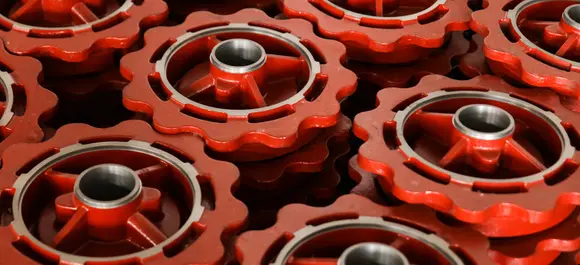Mobile:+86-311-808-126-83
Email:info@ydcastings.com
Spanish
casting techniques
Casting Techniques A Comprehensive Overview
Casting techniques are fundamental processes in manufacturing that allow for the transformation of raw materials into useful products. This method involves pouring liquid material into a mold where it solidifies into a desired shape. The versatility and efficiency of casting make it a preferred choice in various industries, including automotive, aerospace, and construction. This article explores the major casting techniques, their applications, and advantages.
One of the most common casting techniques is sand casting. This process involves creating a mold from a mixture of sand, clay, and water. Sand casting is beneficial for producing complex shapes and is especially favorable for large components. The main advantage of sand casting is its low cost and the ability to cast a wide variety of metals. However, it can have limitations in terms of surface finish and dimensional accuracy.
Another prominent casting method is investment casting, also known as lost-wax casting. This technique starts with a wax pattern that is coated with a ceramic material. Once the coating solidifies, the wax is melted away, leaving a hollow mold. Investment casting is favored for its precision and the exceptional surface finish it provides, making it ideal for intricate parts such as jewelry and aerospace components. While the process is more expensive than sand casting, the accuracy and quality often justify the cost.
casting techniques

Die casting is another essential technique, particularly used for producing small-to-medium-sized components in high volumes. This process involves forcing molten metal into a reusable steel mold under high pressure. Die casting offers excellent dimensional accuracy, smooth surface finishes, and the ability to produce intricate shapes. Commonly used metals in this technique include aluminum and zinc. Despite its initial setup costs, die casting can be highly economical for large production runs.
Permanent mold casting is a technique that uses a reusable mold made of metal. This method is capable of producing high-quality castings with excellent dimensional accuracy and surface finish. It is particularly advantageous for producing metal parts that require strength and durability, such as engine blocks and transmission cases. However, the molds can be expensive and are usually limited to simpler shapes.
Finally, there is centrifugal casting, which involves pouring molten metal into a rotating mold. The centrifugal force helps distribute the metal evenly, resulting in denser and stronger castings. This technique is ideal for producing cylindrical components like pipes and tubes, where the strength is of utmost importance.
In conclusion, the choice of casting technique depends on various factors, including the material used, the complexity of the part, desired surface finish, and production volume. Understanding these techniques enables manufacturers to select the most suitable method for their specific needs, ensuring efficiency and quality in the final products. As technology advances, the casting industry continues to evolve, incorporating new materials and methods to meet modern manufacturing demands.











